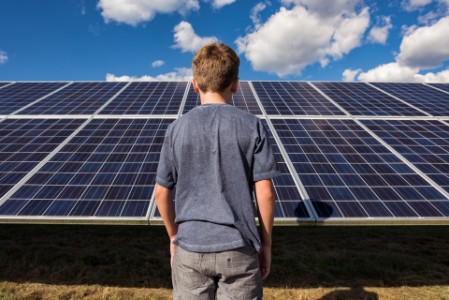In onshore wind, the switch from a highly successful feed-in tariff system to auctions has stalled the sector.
By July 2019, almost 29,250 onshore turbines, with a total capacity of more than 53GW, were in operation across the country – with 5.3GW installed in 2017 alone. Expansion slowed to 2.4GW in 2018, however, and 2019 has seen the lowest level of capacity additions in 20 years.
Under new rules, just 2.8GW per year were tendered for onshore wind from 2017 to 2019, rising to 2.9GW from 2020. However, the six latest auctions were undersubscribed, with just 204MW of successful bids for 675MW of capacity – bid at the ceiling price of €62/MWh – at the last auction in October.
This low utilization of the bid capacity was a function of currently low yields on invested capital and delayed permitting processes, affecting around 11GW of capacity as of mid-2019 – partly because of increasing objections from wind opponents, with even repowering projects struggling to win permits. An additional factor is Germany restricting development in regions where there are grid bottlenecks – notably the north of the country – to 58% of the average of the past three years.
This follows a drop in installed capacity in 2019, caused by a change in policy to favor community projects, many of which have struggled to move into development. That preference for community projects was reversed by the Government in an amendment to the country’s renewable energy law at the start of 2019.
The benefits of this reform, however, are likely to be offset by the proposed distance rule, which requires a minimum of 1km between new wind farms and settlements.
This could reduce the land area available for onshore wind by between 20% and 50%, according to Umweltbundesamt (UBA), Germany’s environment agency.
Offshore, the climate package would increase the 2030 wind target to 20GW, from 15GW, compared with 6.7GW at present. However, this target is dependent on agreement with transmission system operators, who have been struggling to overcome local opposition to new high-voltage lines to carry power from the North Sea to demand centers in southern Germany.
One possible medium-term solution to the transmission problem could be the use of surplus power for producing hydrogen or methane in plants close to the offshore wind farms, effectively ‘storing’ excess generation. Among other initiatives, the HYPOS Consortium is undertaking a two-year R&D project to explore the technical feasibility of storing hydrogen in underground caverns, a large number of which are located in northern Germany.
The picture for solar is considerably sunnier. In the auction in October, 648MW of bids were tendered for 150MW of capacity, with contracts awarded at an average price of €45.90/MWh, compared with €54.70/MWh at the last auction.
In addition, subsidy-free projects are coming forward, such as EnBW’s 180MW array in Brandenburg, which will be Germany’s largest solar farm. On the demand side, large industrials are increasingly entering into corporate power purchase agreements (PPAs). Mercedes-Benz has signed Germany’s first such PPA as part of its plans to supply all of its plants in the country with carbon-neutral energy by 2022. The carmaker will buy wind power, from 46MW of wind-power capacity, from six wind farms in Lower Saxony and Bremen.
Improvements in solar technology also promise to boost installation. As systems become lighter, retailers are showing greater interest in installing rooftop systems. They are also eyeing the installation of electric vehicle charging stations, in a bid to encourage shoppers to stay longer and spend more.
Germany’s climate strategy is aiming for 7 million–10 million electric vehicles by the end of 2030. This is to be delivered through an exemption from car tax until 2030 and an additional €6,000 bonus for each new electric vehicle bought. Company electric cars will also be subject to lower rates of tax. In addition, the Government is to address the current lack of charging stations, with plans for one million to be installed by 2030.
More generally, the combination of distributed solar and electric vehicles could support higher renewable penetration in Germany by bringing supply and demand closer together without triggering local opposition to wind farms or transmission lines. Reform to grid charging could also help in this regard, if some of the costs of transmitting electricity were passed on to generators, thereby incentivising local storage.
Summary
Germany continues to make strides in its climate change strategy. While onshore wind is proving to be challenging, solar energy is considerably sunnier.


